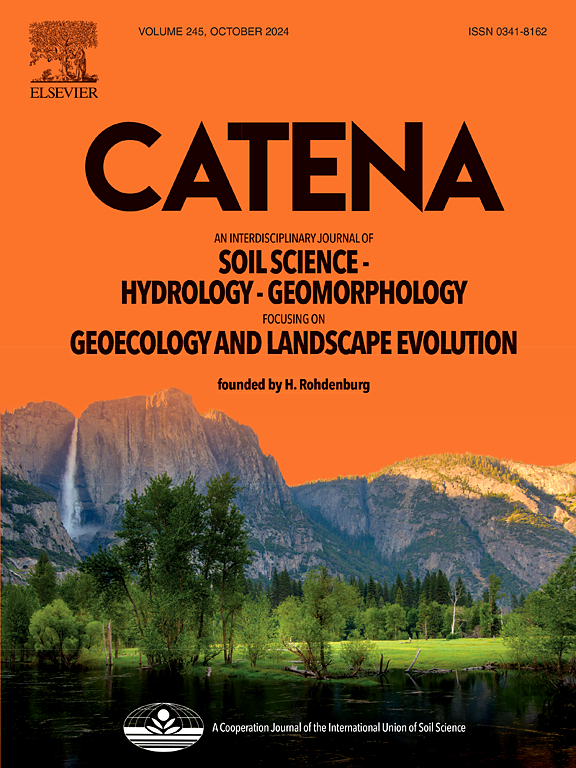Sediment yield in a basin in Brazilian Semiarid Regions: A discussion on positive allometry
Rabelo, Davi Rodrigues , Cavalcante, Andrea Almeida , de Araujo, Jose Carlos
2023-02-01 null null 221(卷), null(期), (null页)
Sedimentological analyses are essential to understand the system that dictates the sediment yield processes of a basin. Basins have their own characteristics according to climatic, geological, geomorphological, pedological, and phytogeographic influences, on the sediment yield at different scales. This study evaluated the hydro-sedimentological aspects of the Rio Serid ' o hydrographic basin to understand the sediment yield behaviour in the drainage area at different scales. Primary and secondary data, such as imagery (remote sensing), geostatistical methods, hydrosedimentological modelling, and calculations, were used to produce thematic maps, to implement theoretical-methodological revisions of the objects, and determine the specific sediment yield. The sediment delivery ratio was utilized to model the sediment yield at the basin scale, which was calculated using Maner's Equation and the Universal Soil Loss Equation from 1992 to 2015. The measured data comprised sediment collection, a bathymetric survey of reservoirs, and erosion pins in the drainage basin on a timescaleof up to 82 years. The modelled sediment yield of the basin (2.5 t ha-1 y-1) was comparable to the measurements performed in the semiarid regions for basins of the same scale. The average sediment yield in the reservoirs (2.15 t ha-1 y-1) was very close to the modelled value. Positive allometry was identified for areas of up to 400 km2 in the upper, middle, and lower reaches. Positive allometry was observed with an increase in sediment yield in the drainage area. Globally, this pattern is rare in regions that have not experienced glaciation and this identification is tan important contribution of this research.
相关推荐
- Canopy-Radiation Balance Method to Assess Daily Actual Evapotranspiration: Applications in Brazil's Caatinga Forest [2023-02-01]
- Connectivity of evapotranspiration processes in a Brazilian dryland reservoir using remote sensing [2023-02-01]
- The role of unpaved roads in the sediment budget of a semiarid mesoscale catchment [2023-02-01]
- Evaporation in Brazilian dryland reservoirs: Spatial variability and impact of riparian vegetation [2023-02-01]
- Temporal dynamics of evapotranspiration in semiarid native forests in Brazil and Spain using remote sensing [2023-02-01]



